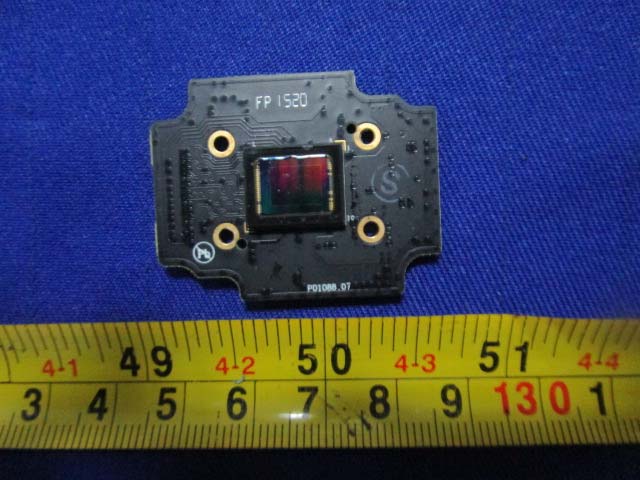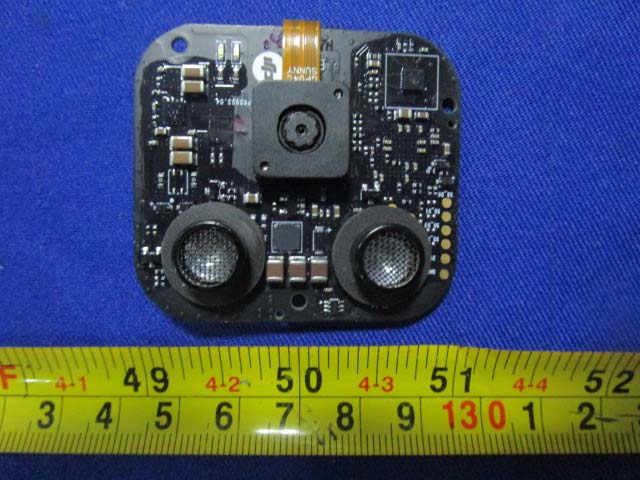Introduction
The DJI Phantom 3 Advanced (FCC ID SS3-WM3221507) is a sophisticated quadcopter designed for aerial photography and videography enthusiasts, combining advanced flight capabilities with exceptional imaging performance. This drone is specifically engineered to capture high-definition video and still images, featuring an integrated camera stabilized by a precision gimbal. With its FCC certification (FCC ID SS3-WM3221507), the Phantom 3 Advanced is legally approved for sale and operation within the United States, indicating compliance with stringent RF emission standards and electromagnetic interference regulations.
In this comprehensive analysis, we’ll delve deep into the technical specifications, internal components, wireless technologies, and regulatory compliance aspects of the DJI Phantom 3 Advanced. Leveraging detailed insights from manuals, FCC filings, and internal component analysis, we’ll uncover what makes this drone a standout in its class.
Key Features & Specifications
The DJI Phantom 3 Advanced is packed with advanced features designed for performance, convenience, and reliability:
Key Features:
- Return to Home (RTH): Includes Smart RTH, Low Battery RTH, and Failsafe RTH, ensuring safe retrieval of the drone under various conditions.
- HD Video Downlink: Utilizes DJI Lightbridge technology for low latency, crystal-clear HD video streaming from drone to controller.
- Flight Recorder: Automatically logs flight data, providing critical operational insights and facilitating troubleshooting.
- DJI Intelligent Flight Battery: 4480 mAh capacity battery with advanced battery cells and integrated battery management system, optimizing flight time and battery health.
- Advanced Camera and Gimbal: Capable of capturing stunning 12-megapixel stills and up to 1080P HD video, stabilized by a precision-engineered integrated gimbal.
- Dynamic Home Point: Automatically updates home position when the pilot moves, enhancing safety and convenience.
- Vision Positioning System: Enables precise indoor hovering and stable flight, even without GPS assistance.
Technical Specifications:
- Camera Resolution: 12 megapixels stills, up to 1080P HD video
- Flight Modes: P (Positioning), A (Attitude), F (Function)
- Failsafe RTH Activation: Engages after 3 seconds of lost remote controller signal
- Bluetooth: Present (details unspecified)
- Battery Capacity: 4480 mAh
Wireless Operating Frequencies:
| Frequency Range (GHz) | Output Power (mW) | FCC Rule Part |
|---|---|---|
| 2.4065-2.4765 | 630 | 15CMO1 |
These frequencies ensure robust performance for the drone’s wireless communication, offering reliable connectivity and extended operational range within regulated emission limits.
Technology Deep Dive
The Phantom 3 Advanced predominantly utilizes standard wireless technologies operating within the 2.4 GHz ISM band. This frequency range is typically employed for Wi-Fi and Bluetooth communication, providing a balance between range, signal penetration, and power consumption. The presence of DJI’s proprietary Lightbridge technology ensures minimal latency and interference-resistant HD video streaming, crucial for real-time aerial footage monitoring.
Operating at 630 mW output power, the drone achieves impressive communication range and performance stability, even in environments with potential RF interference. This combination of technology and regulatory compliance makes the Phantom 3 Advanced well-suited for professional-grade aerial imaging tasks and reliable flight operation in diverse scenarios.
In-Depth Internal Component Analysis / Teardown
The internal architecture of the Phantom 3 Advanced reveals DJI’s meticulous engineering and component selection, optimized for high-performance aerial operations:
The primary processing unit visible here is an Ambarella A9SE75 SoC, specialized in high-quality video processing. This powerful video processor indicates the drone’s capability to manage real-time HD video capture and streaming, ensuring smooth, crisp footage. The PCB is multi-layered with differential pair routing, essential for high-speed data integrity. A metal shield surrounds the ICs, protecting against electromagnetic interference, complemented by a microSD card slot for local storage, enhancing onboard data handling capabilities.

The camera module features a CMOS image sensor centrally positioned, optimized for capturing high-resolution imagery. The PCB is compact, single-layered, and emphasizes reliability through gold-plated mounting holes. This dedicated sensor module indicates DJI’s modular approach, promoting ease of assembly and maintenance, critical for consistent imaging quality.

A sophisticated Altera FPGA chip dominates this PCB, suggesting advanced image processing capabilities or flight control functions. An Analog Devices IC nearby likely handles precise analog-to-digital conversion, essential for sensor integration. Compact layout and metal shielding highlight DJI’s attention to signal integrity and interference minimization.

The GPS module, clearly custom-designed for DJI, ensures accurate satellite positioning. The circular PCB shape allows optimal placement within the drone, and the metal shielding ensures minimal RF interference, critical for reliable GPS performance.

A Maxim Integrated IC suggests robust power management, while an MPU indicates onboard motion processing capabilities. Differential pair routing, PCB antennas, and high-density connectors confirm the drone’s advanced communication and data handling design.

A large central SoC, densely surrounded by passive components and shielded areas, indicates sophisticated computing capabilities. Multi-layer PCB design with careful placement of components ensures optimal signal integrity and minimal electromagnetic interference.

A compact camera board integrates sensors, camera processors, and possibly ultrasonic sensors, highlighting the drone’s advanced visual navigation and obstacle detection capabilities.

Flight control PCB demonstrates modularity and robustness, with high-current connectors and power regulation components crucial for reliable motor control and flight stability.

A densely packed PCB hosts multiple ICs for imaging and control functionalities, underscoring DJI’s focus on high-performance processing and modular system integration.

Regulatory Insights & FCC Filing
The FCC ID SS3-WM3221507 denotes full compliance with US electromagnetic interference standards, making the Phantom 3 Advanced legally approved for sale and use within the US. FCC filings typically include detailed RF exposure reports, EMC test results, internal and external photographs, user manuals, schematics, and block diagrams, providing transparency and assurance of safety and compliance.
As detailed in the user manual, the drone includes advanced features like HD video capture and transmission, Vision Positioning for precise hovering, and intelligent battery management, all aligning with safety and regulatory requirements.
Potential Use Cases & Target Audience
The Phantom 3 Advanced is ideal for:
- Professional Photographers & Videographers: Capturing stunning aerial imagery for commercial projects, documentaries, or promotional footage.
- Real Estate Marketing: Offering high-quality property visuals from unique aerial perspectives.
- Inspection and Surveying: Providing precise aerial surveys for infrastructure, agriculture, or environmental assessment.
Conclusion
The DJI Phantom 3 Advanced (FCC ID SS3-WM3221507) exemplifies cutting-edge drone technology, combining advanced imaging capabilities, robust flight performance, and comprehensive regulatory compliance. Its sophisticated internal design, high-quality components, and meticulous engineering position it as a reliable, high-performance choice for professional aerial imaging and various commercial applications.